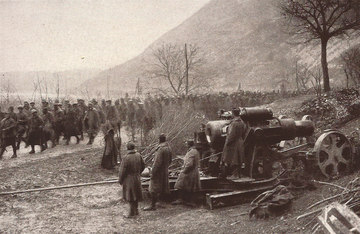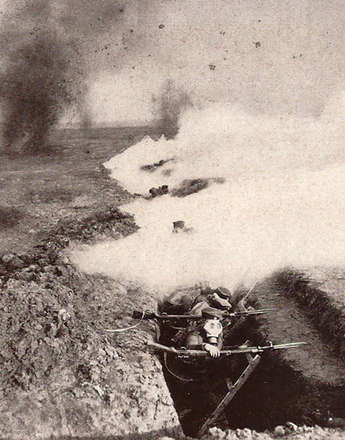Originally, the government in Bucharest was bound to Germany and Austria-Hungary through an alliance treaty from 1883. In reality, however, this agreement continuously diminished in value.
For example, the general staff in Vienna had to recognise that the Romanian executive forces were arresting Austro-Hungarian agents who had been employed against the Romanov Empire, whilst in Transylvania, Galicia and Bucovina they allowed Tsarist spies to work unhindered. Thus, to some extent, Romania had already anticipated the fighting with the Danube Monarchy of the First World War prior to 1914 through a ‘Cold War of the Intelligence Services’.
Before the open exchange of blows between Bucharest and Vienna, and Berlin, signs of serious displeasure were already growing: during the Balkan Wars, Romania adjudged the entering of the Habsburg Empire on the side of Bulgaria as a hostile act. An alliance in a larger armed conflict was now out of the question, especially following the summer of 1914 when Bucharest openly decided to withdraw its support of the Central Powers.
The country’s temporary neutrality was, however, accompanied by domestic controversies, until the pressure from France and Russia eventually increased and the hope for future territorial gains in Transylvania and Bucovina grew more realistic. But just as important were the changed overall conditions since the alliance between Bulgaria and the Central Powers from October 1915 onwards. Romania showed itself willing to consider offers of an alliance with the Entente.
On August 27, 1916 the country finally declared war on Austria-Hungary. However, the Romanian army was not well prepared. The lack of equipment and qualifications, combined with infrastructural deficits, especially the poorly developed rail network, caused many difficulties. After initial successes, the swift conquest of large parts of Transylvania, the offensive came to an abrupt halt. The massive counter-attack launched by German, Austrian-Hungarian and Bulgarian troops pushed the Romanian armed forces on to the defensive.
By the end of 1916, more than half of Romania, including the main city, Bucharest, was in the hands of the Central Powers. King Ferdinand, who had been regent of the Balkans since 1914, had to escape to Iaşi, although the Germans and Austrians did not totally succeed in forcing Romania to its knees.
Hitchins, Keith: Romania 1866–1947, Oxford 1994
-
Chapters
- The Fading-Out of the Balkan Front
- The War before the War
- Sarajevo and the July Crisis
- Ethnic Conflicts and the Brutalisation of the Battles
- Disillusionment for the Army – The Failed ‘Punitive Expedition’
- ‘The Allies’ Successes’
- The Occupying Regime in Different Regions
- Romania's Entry into the War and Defeat by the Central Powers
- Greece on the Side of the Entente
- 1918 – Peace between Romania and the Central Powers
- Consequences of the War on the Balkans







